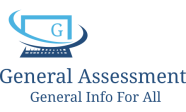Table of Contents
A Randomized Medical Trial
Dariush Mozaffarian, MD, DrPH1; Kevin C. Maki, PhD2,3; Harold E. Baez, MD4; et alFernando Aguilera, MD5; Glen Gold, MD6; Robert A. Hegele, MD7; Patrick M. Moriarty, MD eight; Jennifer G. Robinson, MD, MPH9; Peeling Shi, PhD1; Josephina F. Toor, MD 10; Jean-François LaPointe, PhD11; Saraya Aziz, PhD11; Pierre Lemieux, PhD11; FOR TRIANGLE (Study of CAPRE in Reducing Very High Triglycerides) Investigators
Jama Net Open. 2022;5(1):e2141898. Doi:0.1001/jamanetworkopen.2021.41898
scene abstract icon scene
essence
RCTs: Efficacy of a singular -3 krill oil agent in sufferers with excessive hypertriglyceridemia
key factors
- Is -3-phospholipid/unfastened fatty acid (ω-3-PL/FFA), a certainly derived krill oil containing both free fatty acids and phospholipid -3s, a powerful and secure treatment for
intense hypertriglyceridemia Is?
Conclusion In statistics acquired from 2 randomized clinical trials such as 520 patients, blood triglyceride ranges had been decreased by means by 26.Zero% inside the -3-PL/FFA organization and by way of 15.1% at 12 weeks inside the placebo institution, as compared with a The enormous imply remained for the remedy difference. In 26 weeks. -3-PL/FFA become nicely tolerated, with a safety profile just like a placebo.
Meaning this has looked at observed that -3-PL/FFA decreased triglyceride degrees and became safe and well tolerated in sufferers with intense hypertriglyceridemia.
know more about the benefits of krill oil
Essence
Significance Intense hobby exists in the novel -three formulations with excessive bioavailability for lowering blood triglyceride (TG) levels.
Purpose To determine the segment three efficacy and safety of evidently derived krill oil with eicosapentaenoic acid and docosahexaenoic acid as each phospholipid esters (PLs) and loose fatty acids (FFAs) (ω-3-pl/FFA [capre]). For, measured by fasting TG degree and different lipid parameters in excessive hypertriglyceridemia.
Design, Setting, And Participants
This takes a look at aggregated the effects of 2 identical randomized, double-blind, placebo-managed trials. TRILOGY 1 (Study of CaPre in Reducing Very High Triglycerides) enrolled individuals in seventy-one US centers from January 23,, to November 20 TRILOGY 2 enrolled contributors in 93 US, Canadian and Mexican facilities from April 6, 2018, to January nine,. Patients with fasting TG range of 500 to 1500 mg/dL with or without stable treatment with statins, fibrates, or others. Cholesterol-decreasing sellers were eligible to participate.
Intervention randomization (2.Five:1.0) to -3-PL/FFA, four g/d, as opposed to placebo (cornstarch) for 26 weeks.
Main Outcomes and Measures Primary final results turned into the implied percentage of the trade in TG ranges at 12 weeks; Persistence at 26 weeks changed into the primary secondary outcome. Other decided secondary effects have been consequences on tiers of non-high-density lipoprotein cholesterol (non-HDL-C), very low-density lipoprotein LDL cholesterol (VLDL-C), HDL-C, and occasional-density lipoprotein cholesterol (LDL-C). . C); protection and endurance; And the TG level varies in predefined subgroups.
Results:
A general of 520 sufferers had been randomized, mean (SD) age (54.Nine” (11.2) years (339 men [65.2%]), mean (SD) frame mass index (31.5 (5.1)), and baseline mean (SD) tg -Level 701 (222) mg/dL. Two hundred and fifty-six patients (forty-nine. 2%) were of Hispanic or Latino ethnicity; 275 (fifty-two. 9%) had diabetes, and 248 (47.7%) were receiving statins. In treatment analysis, TG stages were decreased by using 26.Zero% (95% CI, 20.5%–31.5%) in the -3-PL/FFA organization and 15.1% (95% CI, 6.6%–23.5%) inside the placebo organization. [95% CI] at 12 weeks (imply remedy distinction, −10.Nine% [95% CI, −20.4% to −1.5%]; P = .02), with a discount at 26 weeks (suggest remedy difference, −12.7%) , −23.1% to −2.Four%]; P = .02.) Compared to placebo, for non-HDL-C (−3.2% [95% CI, −8.0% to 1.6%]; P = .18) There became no tremendous effect of -3-PL/FFA at 12 weeks on imply remedy difference, VLDL-C (−three.8% [95% CI, -12.2% to 4.7%]; P = .38), HDL-C (zero.7% [95% CI, −3.7% to 5.1%]; P = .77 ), or LDL-C (four.Five% [95% CI, −5.9% to 14.8%]; P = .40) level non -HD The corresponding distinction at 26 weeks for L-C degrees was −five.8% (ninety five% CI, −eleven.Three% to −zero.3%; P = .04), −nine.1% (95% CI, −21.Five% to a few.2%; P = .15) for VLDL-C degrees, 1.Nine% (95% CI, −4.8% to eight.6%; P = .Fifty seven) for HDL-C levels, and 6.Three% (ninety five% CI, -12.Four% to twenty-five.0%); P = .Fifty one) for LDL-C ranges. Effects at the primary stop factor did no longer differ substantially by means of age, intercourse, race, and ethnicity, u. S ., qualifying TG degree, diabetes, or fibrate use, but tended to be large in patients taking statins or LDL cholesterol absorption inhibitors at baseline (suggest remedy distinction, −19.5% [95% CI, −34.5% to −4.6%]; P = .08 for interplay) and low (less than mean) baseline blood eicosapentaenoic acid plus docosahexaenoic acid tiers (−19.5% [ 95% CI, −33.8% to −5.3%]; P = .08 for interactions). -three-PL/FFA became well tolerated, with comparable protection as placebo.





